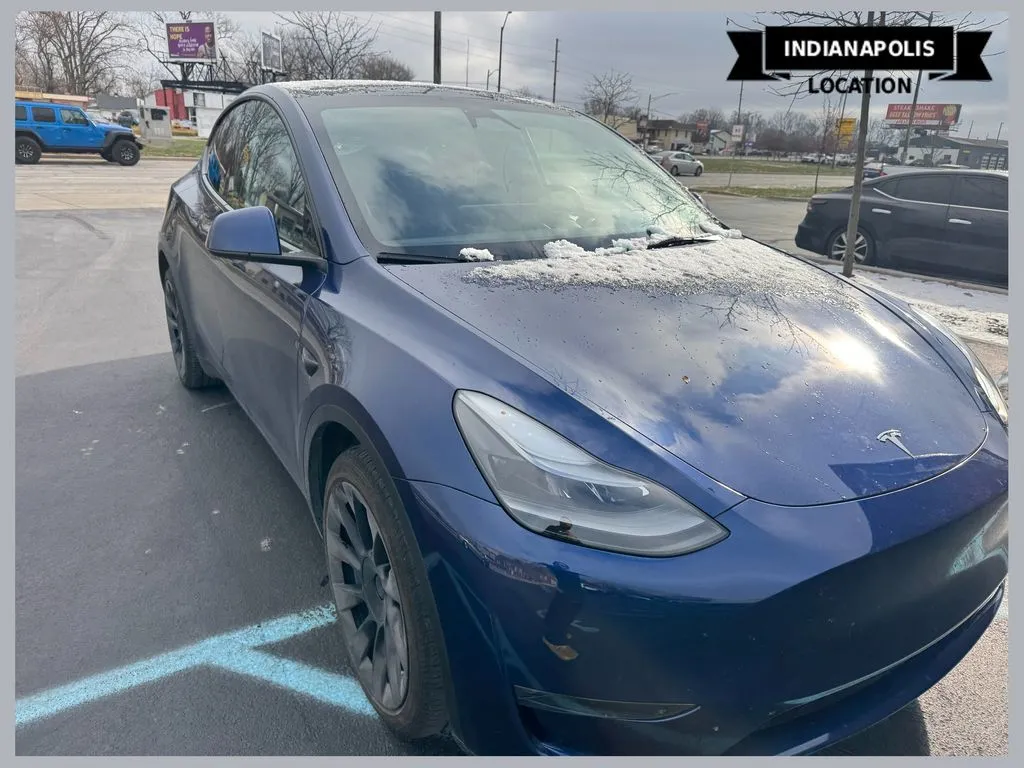Everything You Want to Know About Your Car Air Conditioner Maintenance
Table of Contents
- The Main Components of The Car Air Conditioner
- 1. Compressor
- 2. Capacitor
- 3. Dryer
- 4. Expansion valve or throttle
- 5. Evaporator
- 6. Evaporator fan
- 7. Electrical equipment
- 8. Pressure lines
- Principle of Operation of the Car Air Conditioner
- How to Check the Refrigerant and Oil in the Air Conditioner
- How to Estimate The System Condition
- Air Conditioner Maintenance
- How often should I get my car’s AC checked?
- What are the warning signs my AC might need service?
- Can I recharge my car’s air conditioner by myself?

Technically, air conditioning in a car is not the most important system. Moreover, it is not mandatory – you can drive the vehicle without it. However, cars are becoming more comfortable, and today it is hard to imagine them without a climate control system. Read this explanation, provided by Indy Auto Man Indianapolis car dealer's technicians, to get the answers to your questions about your car's AC maintenance.
Of course, the air conditioner, like any other equipment, requires timely maintenance. This affects the reliability and efficiency of the system. And also - the health of the driver and passengers. In this post, we gathered information about car AC - how it works and how often it requires to be serviced.
The Main Components of The Car Air Conditioner

1. Compressor
This unit creates high pressure to make the refrigerant (freon) move along the lines. The compressor can be driven by:
- crankshaft (via belt drive). The most common option;
- electric motor. It is rare - mainly on electric cars.
- There is also a combined drive.
2. Capacitor
Structurally, this is a conventional radiator. It converts the refrigerant from a gas to a liquid. When the aggregation state changes, the working fluid of the air conditioning system is cooled.
The heat from the condenser is transferred to the radiator of the engine cooling system, which dissipates it into the atmosphere.
3. Dryer
During the AC operation, moisture enters the system, which crystallizes when cooled. In turn, the formed ice crystals can disable the compressor and harm other system components.
A dehumidifier prevents this - a tank with filter meshes and a filler that traps and binds moisture.
4. Expansion valve or throttle
The expansion valve controls the pressure in the system. Freon also begins to evaporate in it.
In some car models, an alternative solution is used - a throttle paired with a battery. The first is responsible for pressure regulation. The second is for the accumulation of excess refrigerant.
5. Evaporator
An evaporator is structurally another radiator. It is installed under the front panel of the passenger compartment. It is designed to evaporate freon and, as a result, absorb heat from the environment.
Water vapor is collected from the air as a liquid on the surface of the radiator, after which it is removed from the passenger compartment using a drainage system.
6. Evaporator fan
Used to increase the intensity of air recirculation in the cabin.
7. Electrical equipment
Electrical equipment performs the following functions:
- management and adjustment of the system;
- temperature control and maintenance;
- forced air supply.
The list of electrical equipment and sensors may vary.
8. Pressure lines
The air conditioning system includes two types of lines - high and low pressure. The former has special requirements: they must withstand pressures up to 44 psi and temperatures of 302°F or more.
Principle of Operation of the Car Air Conditioner

- The compressor creates pressure and pumps gaseous freon. Due to the pressure, the refrigerant moves through the system and heats up.
- The refrigerant is sent through the high-pressure line to the condenser.
- Once in the condenser, the refrigerant cools and condenses. At this stage, the increased pressure remains.
- Further, liquid freon moves along the high-pressure line to the dryer.
- After entering the dryer, liquid freon is cleaned of water and other impurities.
- The purified liquid refrigerant passes through the high-pressure line to the expansion valve or throttle. Then the pressure is reduced.
- Freon goes through the low-pressure line to the evaporator and gradually turns into a gas.
- The gaseous refrigerant picks up heat passing through the evaporator.
- . At the same time, the heat supply to the evaporator radiator and a fan provides the blowing of cold air into the cabin. The evaporator collects water removed from the passenger compartment through the drainage system.
- The heated gaseous freon goes again to the expansion valve through the low-pressure line and then to the compressor.
How to Check the Refrigerant and Oil in the Air Conditioner
The following method is not the most reliable one, but you can use it periodically if the air conditioner operates normally - without obvious issues.
- Start the motor.
- Turn on the system at full power.
- Check the condition of the refrigerant through the sight glass (usually located on top of the dryer).
How to Estimate The System Condition
- Air bubbles appear in the refrigerant for a short time. This means there is enough freon for the air conditioner to operate normally.
- Many bubbles appear, and their number gradually decreases, but they do not disappear completely. Indicates that there is not enough refrigerant in the system.
- The refrigerant is milky white with a large number of bubbles. It also indicates that there is not enough refrigerant in the system. In this case, you can not use the air conditioner - urgent refueling is required.
During the AC operation, oil lubricates the moving parts of the compressor. With a lack or excessive contamination of the lubricant, the compressor will rapidly lose its working life, resulting in premature unit failure.
To check the oil level, you need to take the following steps:
- start the engine;
- turn on the air conditioner and wait about 20 minutes;
- check the oil level through the sight glass.
The oil level must not be below the minimum or above the maximum mark. Additionally, you should pay attention to the appearance of the lubricant: bubbles may indicate a depressurization of the system and, accordingly, the ingress of refrigerant into the oil.
Note: checking the tightness of the system is a mandatory procedure. However, one cannot do this without special equipment. The reason is that R134A freon (the most common) is colorless and does not leave pronounced traces.
However, the following signs may indicate depressurization:
- decrease in the efficiency of climate equipment;
- traces of freezing on highways;
- oil leaks on the compressor.
Air Conditioner Maintenance

Maintenance of an air conditioner is not only filling with freon.
The list of operations includes:
- Visual inspection of components and joints for leaks, freezing, corrosion, and mechanical damage;
- Computer diagnostics (if the car is equipped with a climate control system);
- Freon and lubricant level control;
- System health check;
- Checking the tightness of the system (using nitrogen, leak detector, or ultraviolet);
- Checking electrics (wires, terminals, contacts) and measuring operating currents. If necessary, the elements are cleaned from corrosion, the terminals are tightened, etc;
- Decontamination of the condenser, drain tube, and evaporator;
- Cabin filter replacement. By the way, this procedure is performed more often than a full service of the entire system. Learn more from our guide.
Refueling the car's air conditioning system is carried out in the following order:
- Turn on the air conditioning system; warm up the engine.
- Connect a vacuum pump to the compressor fitting.
- Evacuate the system (several times; after evacuation, wait 2-3 hours).
- Clean the cap of the filling fitting and the low-pressure line of dirt.
- Put the filling equipment hose on the fitting.
- Turn on air recirculation in the cabin with the engine running (it is necessary to keep about 1500 revolutions.
- Open the low-pressure valve.
- Connect a freon cylinder to the filling equipment.
- The procedure is completed after cold air enters the cabin.
- During the refueling process, check the pressure constantly. It should not exceed 285 kPa.
Note: The air conditioner is charged once every 2–3 years for cars up to 5–6 years old and annually for 7 years old and older.
Refueling an air conditioner is not an easy task. Getting it right is even more difficult. That is why the most rational decision is to address professionals. Schedule your visit to the Indy Auto Man service station for AC maintenance or repair.
How often should I get my car’s AC checked?
Your air conditioner doesn’t need attention every time you change the oil, but regular checks help keep it trouble-free. We recommend servicing every 2–3 years for newer cars and once a year for vehicles that have seen a few more Indiana summers. Fresh refrigerant and clean oil help your system stay cool and perform like it should.
What are the warning signs my AC might need service?
If the cool breeze turns lukewarm, or you start to notice odd noises or a musty smell when you turn it on, it’s time to listen to your car. These are often early signs of low refrigerant, leaks, or clogged filters—issues best handled before they turn into bigger repairs.
Can I recharge my car’s air conditioner by myself?
DIY kits may seem simple, but AC systems are more complex than they appear. Overfilling or using the wrong refrigerant can damage the compressor quickly. At Indy Auto Man, certified technicians refill the system with precision, test it for leaks, and make sure your cabin stays cool without compromising your car's safety.



